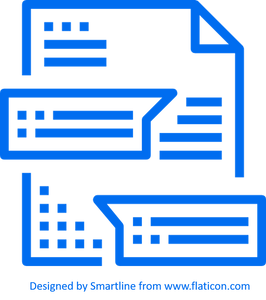
With the start of a new term just around the corner, faculty are busy putting the finishing touches on their syllabi. Research shows the tone and structure of a syllabus can impact student perceptions and student-faculty rapport, but it’s easy to lose sight of this in the effort to get everything organized in advance of a new term. If you only have time to consider two elements of your syllabi, I encourage you to:
- Take the first step towards making your syllabi learner-centered by including overarching learning objectives (content and skills) and their connection to course activities and assignments, and
- Consider expanding your accessibility statement for students with disabilities.
Learner-centered syllabi include learning objectives
Learner-centered syllabi move beyond a focus on course policies and procedures and become educational documents that include learning objectives, overviews of study strategies for the course, and discussion of help-seeking approaches beyond listing office hours. In addition, these documents are written in a tone that is less regulatory and more welcoming. Research by Perrine, Lyle, and Tucker 2010 suggests learner-centered syllabi encourage student help-seeking and Richards et al 2016 found that learner-centered syllabi can enhance student/faculty rapport.
An easy first step towards making your syllabus a learner-centered syllabus is to include the overarching learning objectives for the course on the syllabus, and outline how course activities, assignments, and assessments connect to those learning objectives. Course learning objectives can include both content objectives and ancillary skills development. Generally, 2-4 course content goals combined with one or two ancillary skill goals is a reasonable scope for a course. SERC has some great materials to help you workshop the development of content and ancillary skills objectives for your course. In particular, make your objectives concrete and relevant to the types of activities that are practiced in your discipline.
Additional resources:
- If you want to measure how learner-centered your syllabus is, the following 2009 paper has a rubric against which you can check your syllabus: “Assessing learner-centredness through course syllabi” (R. Cullen & M. Harris).
- Example of how (and why) one faculty member transformed his syllabus into a learner-centered syllabus: “Constructing a learner-centered syllabus: one professor’s journey” (A. Richmond).
Accessibility statements are powerful when they go beyond the boilerplate
All syllabi should include a statement about accommodations for students with disabilities. The Carleton disability services office provides such a statement. However, the resources listed below suggest there are benefits to going beyond the standard statement about accommodations and including a personalized statement acknowledging the different ways that people learn, potential barriers to learning, and a desire to maximize accessibility. This helps students feel more comfortable approaching you for conversation about the accessibility of your course along multiple dimensions.
If your syllabus includes a policy about the use of technology in your classroom, consider the implications of your policy on accessibility for students who need technology-based accommodations, and be thoughtful about the wording of your policy. You might want to revisit this previous post.
Additional resources:
- Examples of wording for mre expansive syllabi statements about accessibility: Project ShIFT/Refocus: Syllabus Statement
- Aspects of syllabi construction to consider with regards to accessibility: Suggested Practice for Syllabus Accessibility Practices (T. Wood & S. Madden).
- Example of how a composition instructor thinks about accessibility in course and syllabus design: “Teaching is Accommodation: Universally Designing Composition Classrooms and Syllabi“ (A-M. Womack).
Add a comment